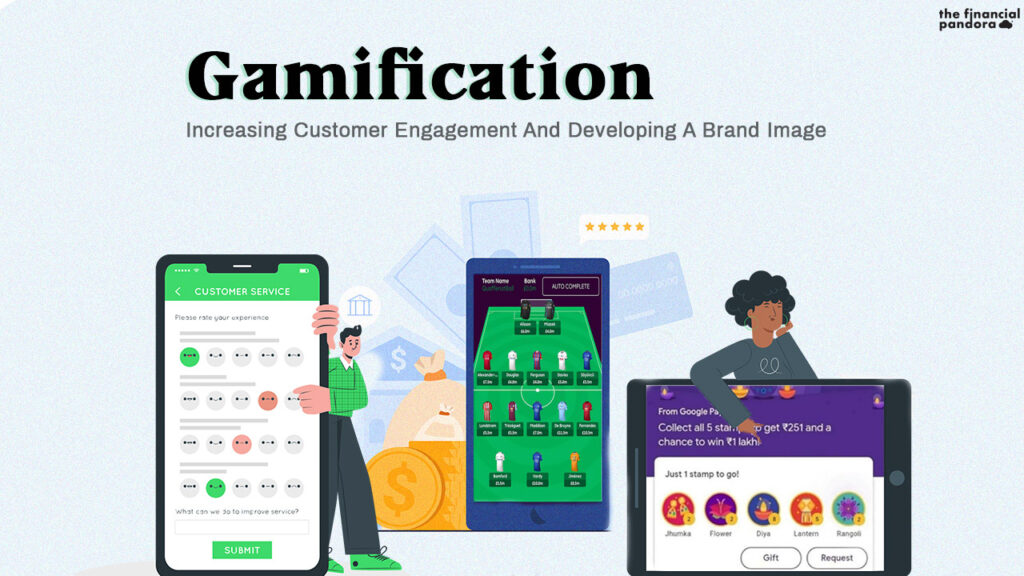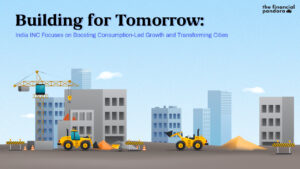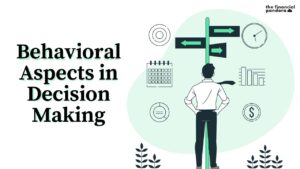Rohan was looking at his phone when a notification popped up:
“Looking for a Flower or Rangoli? Paying a mobile bill, or doing a mobile recharge could get you one of these stamps.”

It was the Google Pay Diwali Campaign trending everywhere. All his friends were posting on social media the status of their progress in the challenge. Apparently, people had to collect five stamps: Rangoli, Diya, Jhumka, Lantern and Flower. People would get Rs 251 if they collected all five stamps and a chance to win an additional Rs 1 lakh. Rohan did not understand the hype behind this campaign. The fact that it was trending on twitter with thousands of tweets and the publishing of articles on “How to collect these stamps” by major media houses such as Hindustan Times and Republic World made him a bit curious.

Rohan started researching and found out that this method is called Gamification. In a layman’s terminology, it can be defined as introducing various elements of a game to a product with the objective of increasing the engagement of the people. The oldest example of the use of gamification can be traced back to the early 1900s. It started out with giving badges to the Boy Scouts to recognize their achievements but over the past century, it has evolved into a major marketing strategy to encourage engagement and gain customer loyalty. From the frequent flier programmes introduced in 1981 to the launch of the first gamification platform, Bunchball in 2005, the last decade (2010s) has witnessed a new wave of more innovative and creative gamification ideas.
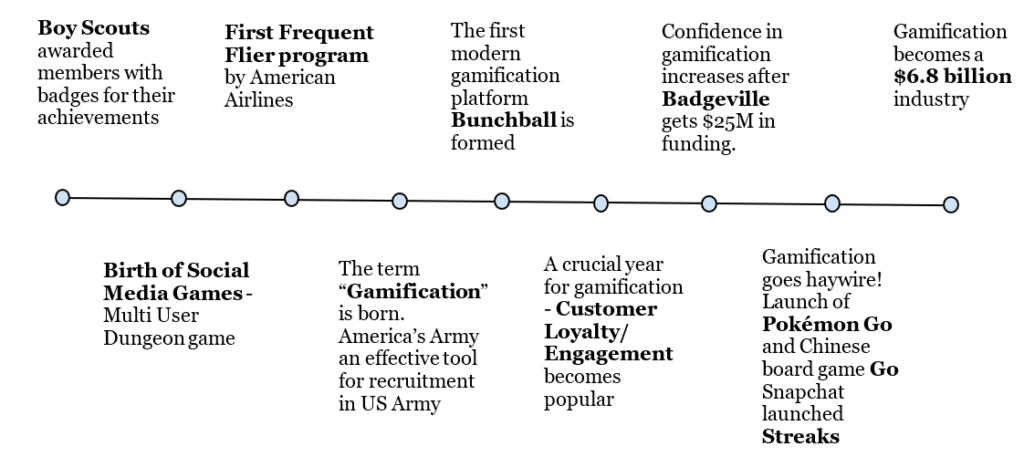
Rohan started feeling left out. This was the key factor which made the campaign so successful. Even highly educated adults fall into the “Fear of Missing Out” which makes them participate in the campaign. The feature of getting stamps through a variety of options such as making transfers, paying bills/doing recharges and even requesting stamps from friends keeps the people hooked. There is a fact that a person becomes more excited in anticipation of getting a present. When a person scratches a “Scratch Card” on Google Pay, the uncertainty and unpredictability of whether he/she got any rewards is what drives people to use Google Pay than other online payment gateways. Just like Google Pay, gamification can nowadays be found in every field throughout the world.
Gamification in the Banking Sector
A. Banking is a sector in which gamification has been used tremendously in the past few years. The major reason for this change is the increasing use of the Internet and the introduction of Net-Banking facilities. Banks focus more on establishing a relationship now rather than just acting as a transactional entity. Some of the innovative gamification ideas executed by banks are:
- Emirates NBD Bank
This is one of the most innovative ideas of gamification. Around 60% of the population of UAE was obese/overweight. Based out of Dubai, it started offering interest on savings accounts on the basis of the number of steps a person walks. The savings account is linked to fitness devices/apps such as Google Fit or Apple Health. A person can earn upto 2% interest every year if the average steps taken by them are more than 12000. Basically, “the more you walk, the more you earn”. This idea also helped solve a major problem in UAE – obesity. Thus, this platform made people both financially as well as physically fit. It was the winner of European Financial Management and Marketing Association (EFMA) Innovation Award.
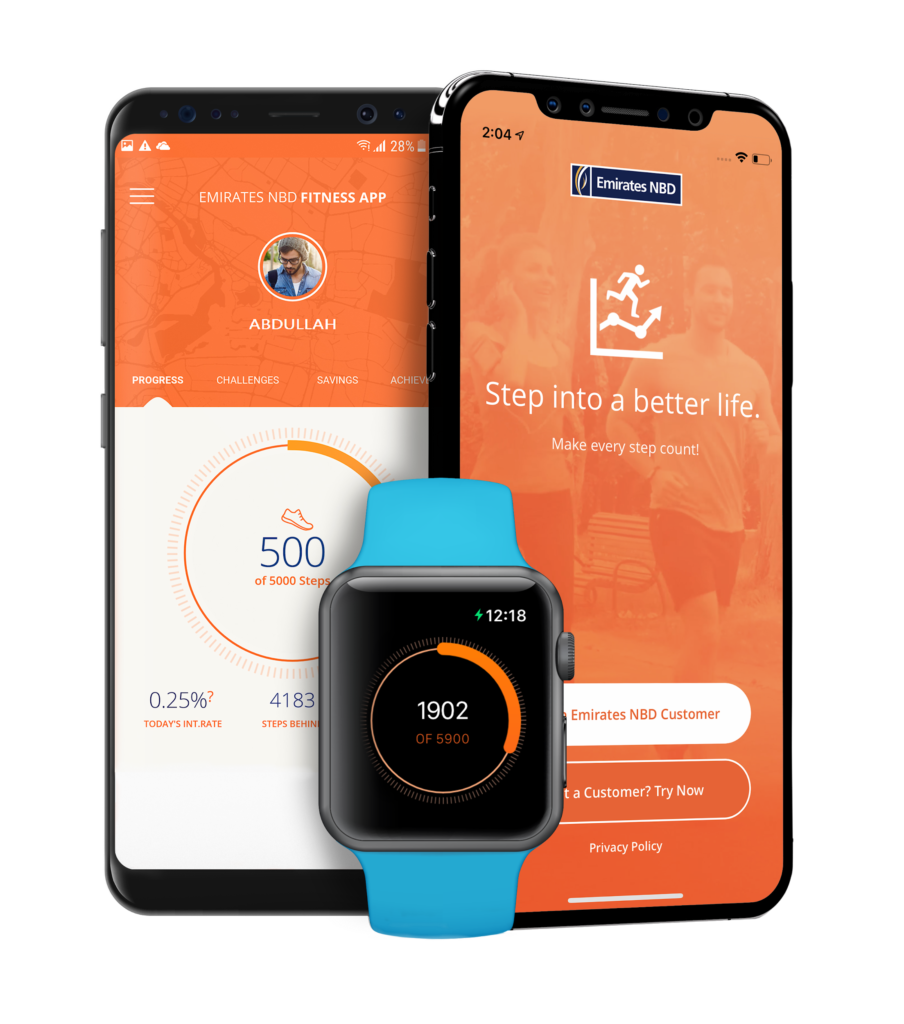
- Zion Bank
Based out of Salt Lake City, it also came up with one of the most engaging and creative gamification ideas. The contest, called “Pay for A’s” encourages school students to earn $1 on every A they have on their report card. This idea is very unique and creates engagement from the grassroot level. This would be the first bank account of the student, hence it helps the bank create a dedicated customer base and eventually develops brand loyalty. Students who would open a bank account between the ages of 12-18 would continue to use the same bank further also as they have a connection with it.
There are many more examples such as BBVA Bank (Spain) and ANT Financials (China). Both of these have set up a kind of virtual economy based on a point/credit system. Customers have to collect the points and then can redeem it to rent a car, book flights/hotels, get discounts on shopping and several other incentives. The BBVA Bank has won the Bank Innovation Award and the GAward for its innovative gamification system.

In India, traditional or offline banking is still prevalent and followed by the majority although nowadays netbanking has been increasing exponentially. There is a lot of scope for many creative gamification ideas to be introduced in India. Many banks such as HDFC Bank, ICICI Bank, Kotak Mahindra Bank have their Loyalty Programs which offer points on purchases made by Credit Card/Debit Cards. These points can be further redeemed on airline miles, hotel discounts and many other incentives. State Bank of India (SBI) has launched a new and interesting idea of gamification.
- SBI Green Fund
In this, the customers earn Green Points through using any service of its digital banking platform, YONO. They can further redeem the points for gifts and merchandises. But, what sets it apart is that people can also donate for an environmental cause through this. For instance, a tree will be planted for 100 points. The person can keep on checking the progress and receives an E-certificate as well. One can not redeem anything materialistic, but such a sustainable initiative develops a good brand image and establishes trust amongst the people.

Apart from banks, CRED is the perfect example of an entirely gamified platform. It is an Indian startup which gives a person certain incentives on paying their credit card bills on time. The concept on which the company works is gamification itself.
Gamification in Sports
B) Many sport associations throughout the world also use gamification to keep the fans engaged. One of the biggest examples of this is the Fantasy Premier League (FPL) which is hosted by the Premier League itself. One has to create a team at the start of the season with an allocated budget of £100 million. During the entire season, they get points based on the real time results of the matches and the performance of the players. There are also certain boosts such as Triple Captain and Wildcard which keeps the players hooked on and competitive.
Is Firmino a good pick in the squad? Will Aguero score today? Whom should I transfer for Zouma? These are some of the questions which come in the mind of a Fantasy Premier League player. It gives the fans real time experience of being a manager of a club. At the end of the season, the player who has the highest number of points amongst 6 million players is declared the winner. There are also certain weekly and monthly prizes to keep the fans encouraged and hooked. Players can form their own league with friends and compete amongst themselves. People discuss amongst themselves, use wildcards and boosts, compete to be first in their league and keep on engaging with Premier League in some manner. Such is the power of gamification. FPL showed around 2M users in the 2012/13 season and since then, it has just boomed up to 6M users in 2019/20 season.
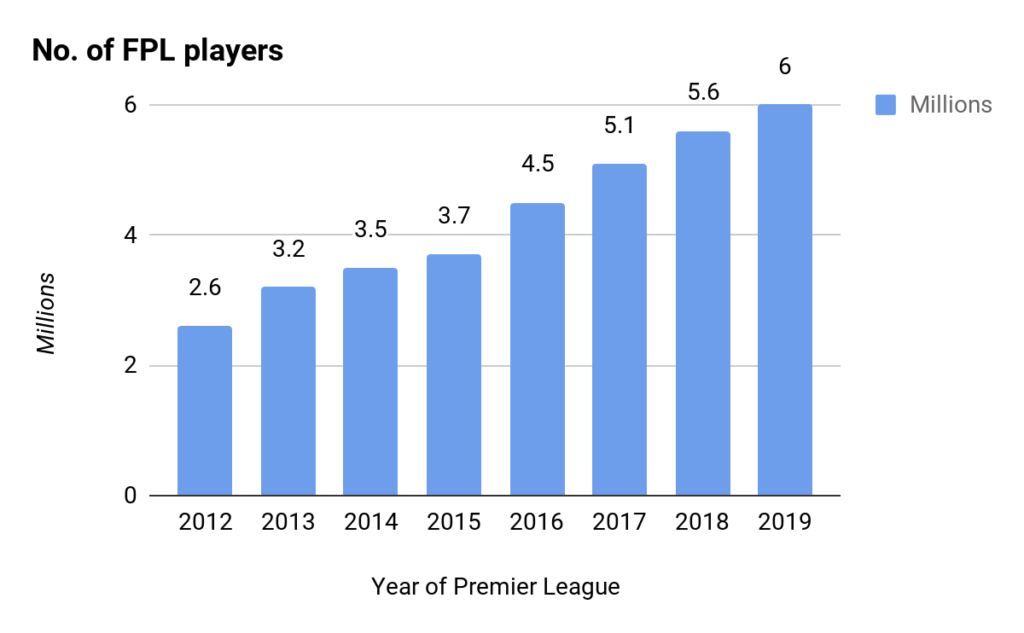
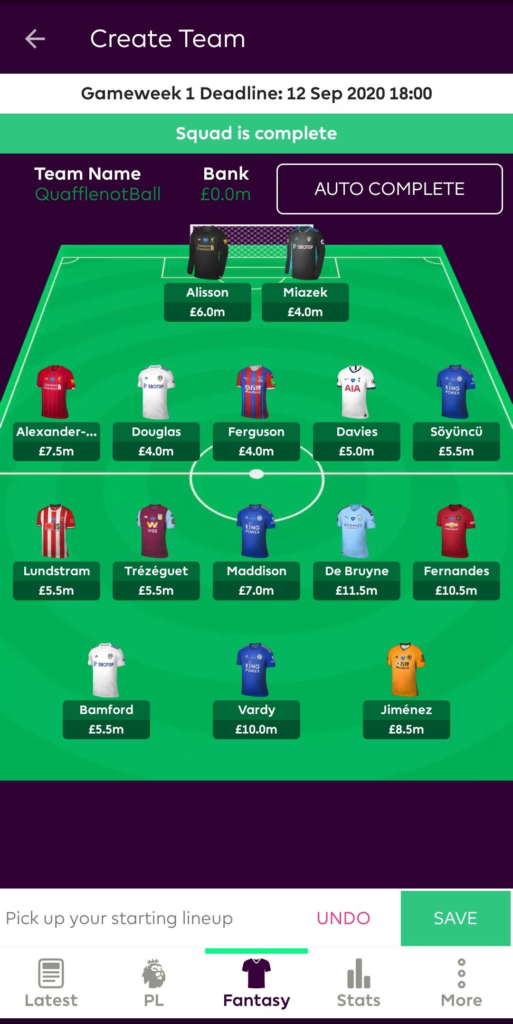
Dream11 – the title sponsor of IPL 2020 works along the same lines as FPL. It is a fantasy sports platform which entered the Unicorn Club in 2019. With a staggering user base of 8 crore, it allows a person to form his own team. According to the live matches, the person gets points based on the performance of the players and the outcome of the match. There are certain cash contests where the total amount pooled in is then distributed amongst the winners. Apart from IPL, Dream11 is the official partner for many other leagues such as Indian Super League (ISL), Pro-Kabaddi League (PKL) and NBA.
These types of fantasy platforms keeps the people engaged to the actual leagues happening. For instance: Rohan has used a Triple Captain boost on Mohammad Salah. He would definitely see the Liverpool game wishing that Salah scores a goal. For a person having Virat Kohli as his captain, he/she would definitely want RCB to win.
Food Gamification
C) Next, we move on to see gamification in the restaurant and food-delivery sectors. Starbucks, with more than 30,000 stores all over the world has an exquisite loyalty program giving people plenty of reasons to choose Starbucks over other big players. It has an user-friendly app through which one can place orders via phone, check their gift card balance and earn ‘stars’ from eating at Starbucks. Customers also earn birthday rewards and free-in store refills. People generally pay for the ‘brand’ and Starbucks makes sure that it is worth it.

A lot of the big fast food chains have been employing gamification techniques to increase their customer engagement and to develop a strong brand image. Below are some of them:

Apart from the fast food chains, we see gamification being used in our day-to-day life as well. A Pepsi bottle, a Lays packet or a simple Munch chocolate are great examples of this.

i. Buy a ₹20 Nestle Munch Nuts using Paytm.
ii. Open the wrapper and there is a code written on the inside.
iii. One can redeem the code on Paytm and they get ₹40 as cashback.
This was a short gamification idea introduced to attract the customers into eating Munch Nuts. It is not economically feasible for long term, but for a short span of time, it is very effective in increasing the customer base and improving the number of sales.
Moving on to the delivery side, there are two big players right now – Zomato and Swiggy. Swiggy was the first one in India (2014) to get into the food-delivery business. Zomato, which primarily served as a restaurant review website quickly expanded into the food-delivery sector (2015) and with its content gamification, it is giving Swiggy a tough fight.
Zomato has different titles and rankings which motivates users to share their reviews and ratings. People who manage to get into the highest level get gift vouchers from various restaurants and their food reviews are published.

Further, Zomato launched a Zomato Premier League (ZPL) – that allows the people to predict who will win the match leading them to win rewards.

i. With a Royal Challengers Bangalore vs Mumbai Indians match going on, Rohan decided to order from his favourite restaurant. He got a 40% discount.
ii. When his food arrived, he predicted that RCB would win.
iii. RCB won at the end of the day and he got an additional 30% cashback on his order.
For a pizza and soft-drink order of ₹400, Rohan eventually got it for around ₹150 only.
IPL is more like a religion in India and more than four million people played the Zomato Premier League during the beginning weeks of IPL. The people saved over ₹8 crore ordering food from their favourite places. There is an added dopamine rush of predicting who will win the match. It all adds up perfectly to make a successful gamification campaign.
The world is full of gamification ideas and examples, some of which are too small to notice. Netflix Originals such as Bandersnatch introduces people about a new form of cinema – interactive movies. There are many health-tech startups which are using gamification to make people fit (Wearables such as Fitbit). It is projected to be a $23 billion industry by 2022. However, Gamification is yet unexplored and not much heard of. People will definitely realize its importance and the impact it has in a few years. Jesse Schell, an American video game designer said that gamification will end up everywhere, from your toothbrush to your tax returns. It might not be long before we live in a Black Mirror type of a world.
Let the games begin!
Follow Us @
Some Unrelated Stories!

